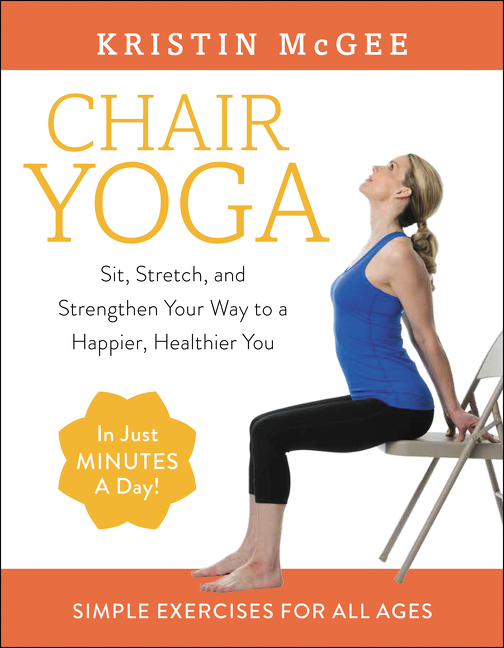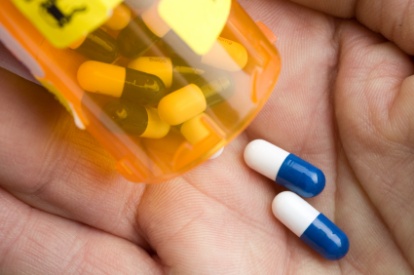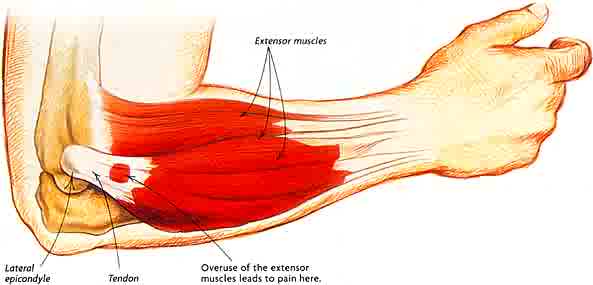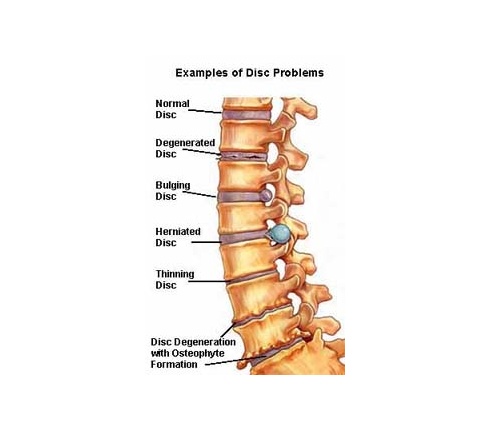Archive for the ‘health’ Category
posted by AJGpr |
on health, psychology, relationships |
As reported on November 20, 2018, in an article in the New York Post, “when it comes to fidelity in relationships, a new surprising survey found that 49 percent of men did not think kissing someone else was cheating.” AJGpr client, Dr. Fran Walfish, Psy.D., a leading Beverly Hills-based child, couple, and family Psychotherapist recently weighed in on this newly released survey by the BBC and said that these men are in “denial.” Walfish went on to say, “The guy feels a tinge of guilt for what he knows is wrong behavior, and he can’t tolerate or bear that feeling of guilt, so he rationalizes it by telling himself it’s not cheating.”
For the full article click here.
posted by AJGpr |
on fitness, health |
AJGpr client, Nika Eshetu, owner/founder of Atomic Pilates in NoHo, California is an expert Pilates and golf fitness specialist. Recently, Lori Corbin, fitness reporter for KABC stopped by Atomic Pilates to check out Nika’s golf fitness program. Lori was so impressed, she featured Nika and the Atomic Pilates in this segment on KABC evening news.
PILATES EXPERT OFFERS UNIQUE TOOLS TO HELP GOLFERS GET THEIR GAME ON PAR
What looks like a typical Pilates session is actually a golf workout.
“You’re bending your body in a weird shape that’s not natural – not good for your back. And in order to hit the ball hard and accurately, you need to torque and turn your body,” said Mitch Dunitz, of Sherman Oaks.
Dunitz loves to play golf and does what it takes to improve his game, along with strengthening his body.
Nika Eshetu owns Atomic Pilates and is also a Titlist Performance Institute golf instructor. She sees a growing number of golfers add this component to help their game. As most have this issues with their core and glutes.
“Weak glutes, weak core are the biggest two because they work together,” Eshetu said.
More…
posted by AJGpr |
on fitness, health |
LASplash.com editor Stephan Martin came to Atomic Pilates twice to workout with AJGpr client Nika Eshetu, Master Pilates and Sports Fitness instructor.
Here’s what he said in his article Atomic Pilates and Fitness – The Workout That Your Body Needs.
Pilates and golf might seem like worlds apart, but that is where Nika Eshetu and her Atomic Pilates and Fitness come in to play. Nika has perfected both worlds and can put you through a workout like you have never experienced with her Pilates class. She can also use her expertise in golf to have your body perfectly aligned on every swing.
Atomic Pilates and Fitness, located in North Hollywood, is far more than Pilates and Nika is far more than a Pilates instructor. Nika is the instructor who never stops learning and thus you are the beneficiary. The list of what she has knowledge of is always growing and includes; Pilates Method Alliance (PMA) Certified Instructor as well as a Master Instructor for the Evidence Based Fitness Academy (EBFA). Additional certifications include: National Academy of Sports Medicine (NASM) Certified Personal Trainer, Functional Movement Taping (FMT) 1 and 2 as well as her expertise in golf. Those are a lot of names that might not mean a lot to you, but needless to say if you visit Atomic Pilates, there isn’t much that Nika couldn’t help you with, but it all begins with Pilates.

Atomic Pilates is the Pilates studio for everyone. From the beginner to the person who has been doing Pilates for years, Nika has a class for you and the equipment to challenge you as well. If you are looking to improve your core, posture, flexibility, and endurance, Pilates is for you. Pilates is truly something you have to try to get a true understanding of what it is all about. It will challenge you by working muscles you thought were working, but really weren’t. The workout will leave your body feeling sore, in a new way. But it will also open up your eyes to a new way of exercising and Nika and her staff always make sure that you are using proper technique and getting the most out of every class.
In addition to Pilates, Atomic offers Bodhi Suspension classes. These are ropes that offer you multiple points of suspension. Most suspension systems out there are only two points of suspension. With the Bodhi Suspension System you can have up to four points of suspension. What this means for your workout is that you will have the benefit of being challenged by gravity in more variations and ways that your body has never encountered. Two points can be a workout, four is almost a work of art and will seemingly work every muscle in your body. Again, this is a workout that is different than anything you have ever done before.

Pilates Class
A great way to get introduced to Nika and to see how prepared you are to take her classes, the movement screening is an amazing start. Nika measures your range of motion in a wide variety of areas as well as some other tests to see where you are at physically and what you might improve in. With this test and her knowledge, Nika has a great ability to point you in the right direction and provide you with tips to improve. She can also tape you as you walk and tell you if you are walking correctly and how you can improve in that area. This test alone is worth a visit to Atomic. If you continue with Nika, you can retest down the road and see how you have improved.

Advanced Pilates Movement
“That is why I started doing the screenings and assessments, once they see it in something measurable, then they can say wait things are really changing,” Nika said.
While fitness has become more prevalent in golf, who knew Pilates could be the secret to fixing your golf swing? I would venture not many golfers, but the real key to fixing your golf swing is Nika. While an amazing Pilates instructor, she also is a Titleist Performance Institute Certified Fitness Professional as well as being K-Vest Certified. What does all of that mean? It means even though she isn’t a golfer, she knows more about how to correct a golf swing than almost any golfer out there.
“Golf is not about being super athletic and putting on a lot of muscle, it’s about being fit to play golf and your body having the proper movements and proper range of motion and strength where you need it for the game of golf and it’s about fixing those areas,” Nika said. “The simplest thing is posture it will make the biggest difference, with the mechanics there is a lot going on, the posture is an easy fix for the most part a few exercises a day and almost everyone has something going on with their posture.”
Nika gets you set up in a K-Vest so that your swing is recorded and then she can look at how your body as well as your hands are moving throughout your entire swing motion. This allows her to see if your posture is off or there are any adjustments that need to be made in your stance. Once she has you perfectly aligned, then you can test out your new stance and new swing and you will find out if you are doing it correctly.
Posture is not only important in Pilates as well as any form of exercise and of course golf, but it impacts people in everyday life.
“Now we are starting with kids in elementary school with these heavy backpacks, then reinforced with cell phones and iPad, so they are starting younger and they get older it just gets worse, I see people in their 20’s and 30’s hunched over, that shouldn’t be so, Pilates can make a huge difference,” Nika said.
There are so many reasons to visit Atomic Pilates and Fitness, but the main two are for your own well-being and for Nika. While an amazing instructor, you will always leave a class or session not only feeling a little better but you will always leave with some extra knowledge that will help whether you are simply walking or sitting at your desk and you will feel better for it.
posted by AJGpr |
on fitness, health, Uncategorized |
 Photo: Chris Fanning
Photo: Chris Fanning
Don’t let sitting all day leave you stiff and sore. Steal five minutes to stretch away tightness with these simple yoga poses.
Health Magazine reached out to AJGpr client, celebrity Yoga and Pilates instructor, Kristin McGee to share some best chair yoga moves to combat back pain from her new book Chair Yoga: Sit, Stretch, and Strengthen Your Way to a Happier, Healthier You (HarperCollins 2017).
“Oh, my aching back!” I can’t tell you how many of my students have back issues. And it’s no wonder, considering most of us spend our days tied to our desk chairs and parked in the same position in front of our screens hour after hour. The problem: Sitting for prolonged periods can cause or exacerbate back issues. When we’re stuck in this position, our hip flexors shorten in front and pull on our lower back. Not to mention, constant slouching can lead, over time, to compressed disks. That’s why it’s crucial to stretch your back every day. Here, four moves you can do right in your office..
1. Backbend Arch
Start seated at edge of chair, placing hands behind you with fingers facing away from hips. Prop yourself up on fingertips, drawing sacrum in and up to lift lower back. Follow backbend all the way up chest to shoulder blades and open up entire front body. Hold and breathe for 8 to 10 breaths, then release.
2. Cat/Cow
Sit at edge of chair with feet flat on the floor. Place hands on knees and inhale, lifting chest and sticking hips out behind you. Lift gaze, open chest, and gently squeeze shoulder blades together (A). On an exhale, round chest, scoop in belly, and curl tailbone under as you drop head toward sternum (B). Repeat for a series of 10 cycles.

3. Lower-Back Circles
Sit with feet hip-width apart and hands resting on knees (A). Inhale, then begin circling torso clockwise, making sure to initiate movement from base of spine (B). Complete 8 to 10 rotations. Stop and then repeat the motion, this time circling in a counterclockwise direction. Continue alternating for 2 to 3 minutes.

4. Roll-Downs
Sit with feet hip-width apart and hands hanging at sides (A). From head, start rounding down through spine (B). Exhale, letting forehead release forward and the weight of your head bring you over until top of head is by thighs (C). Inhale; slowly start stacking vertebrae as you round up to sit. Draw belly button to spine to protect back, and feel the articulation as you round up. Continue rolling down and up for 5 to 8 cycles.

Adapted from Chair Yoga: Sit, Stretch, and Strengthen Your Way to a Happier, Healthier You by Kristin McGee ($19; amazon.com). Copyright 2017 by Kristin McGee. Reprinted by permission of William Morrow, an imprint of HarperCollins Publishers.

posted by AJGpr |
on health |
The effect of sitting for prolonged periods can cause strain on the neck and shoulders, back, hips, and legs. In addition, prolonged sitting is linked to heart disease, diabetes, and premature death. Scary? Yes.
Not so scary anymore since nationally recognized celebrity yoga and Pilates teacher, AJGpr client, Kristin McGee came up with a solution in her new book, Chair Yoga: Sit, Stretch and Strengthen Your Way to a Happier, Healthier You (HarperCollins, January 17, 2017). Chair Yoga is for anyone who is sedentary…at their desk, watching television, waiting in a doctor’s office, on a plane, or stuck in traffic during a commute.
A longtime yogi and Pilate’s instructor, Kristin knows that adding the practice of yoga to one’s fitness routine has physical, mental, and spiritual health benefits. She has harnessed her knowledge and beliefs into a comprehensive, accessible, and easy-to-follow yoga instruction guide of 100 chair yoga poses and exercises that can be done daily anywhere, anytime. In just minutes a day, these simple exercises will help activate the breath, the body, and focus the mind to improve one’s happiness and wellbeing.
Chair Yoga has so many benefits — even for that reader who works out daily — adding a gently chair yoga pose here and there throughout the day centers and re-energizes oneself by igniting the breath.
Chair Yoga: Sit, Stretch and Strengthen Your Way to a Happier, Healthier You (HarperCollins) is a fun, accessible guide to 100 yoga poses and exercises can be done daily anywhere, anytime, in a chair and garner remarkable physical and mental health rewards.
You don’t need a mat, you don’t have to stand, and you don’t need to wear yoga pants (though you can if you want to). Just grab a chair and get started.
Kristin created Chair Yoga for the majority of Americans living a sedentary lifestyle and those who find it difficult to fit movement or exercise into their day and the poses are easy enough for all ages and stages. Chair Yoga can be done in a myriad of places: at your desk; on an airplane, bus, or subway; a doctor’s office waiting room, or on your couch at home.
Divided into chapters organized by body part, each exercise includes step-by- step instructions and easy to follow photos. Plus, there are bonus chapters with 5 and 10-minute routines.
For Kristin, “the art of yoga is being able to be present anywhere and tap into your vital life force to keep your body flexible, strong, and healthy.”
posted by AJGpr |
on health |
AJGpr client, Dr. Norman Marcus, founder of the Norman Marcus Pain Institute, is a leading pain specialist who has revolutionized the how to diagnose and then eliminate the most common causes of pain, without surgical intervention. Today he posted a blog about Rafael Nadal’s recent announcement that he would undergo stem cell treatment to relieve his back pain.
Rafael Nadal will receive stem cell therapy for back-pain. Should-you?
Earlier in November, Rafael Nadal, the 14-time Grand Slam winner, announced he would receive stem cell treatment to help heal his ailing back, the same type of treatment he received for his knee. His doctor in Barcelona, Dr. Angel Ruiz-Cotorro, who has been treating Nadal for 14 years, said, “Nadal’s back pain is ‘typical of tennis’ players in that the treatment is meant to help repair his cartilage.” Stem cells were recently extracted from Nadal for a cultivation process to “produce the necessary quantities,” said Ruiz-Cotorro. Once cultivated, the stem cells will be placed into the joints of his spine with the goal of regeneration of cartilage as well as for an anti-inflammatory effect. Dr. Ruiz-Cotorro predicts that Nadal can return to training in early December.
Will stem cell treatment work for Nadal’s Back Pain?
Stem cell treatment may seem logical in certain situations – for example, if you have a mechanical problem where a knee has worn out cartilage, causing bone to rub against bone, it makes sense to use stem cells to grow new cartilage to have a cushion to protect the bone and cause the knee to be less painful. As much as we may want to see him back on the courtstennisgrabbing more grand slam titles, if Nadal’s stem cell treatment is being used to eliminate his pain by repairing his joints or discs, the actual cause of his back pain may not be addressed.
Where does back pain originate?
The number one reason for back pain is muscular and other soft tissue, yet muscles are rarely evaluated as the cause of back pain. The only way to determine if Nadal’s back pain is from soft tissue and similar to most people with back pain would be a physical examination of Nadal’s back that included identifying possible muscles as the cause of his pain.
Some doctors believe that the disc, the cushion between the bones of the spine (the vertebra), is a major cause of back pain. They believe that surgeries to correct the flattening or herniation of the disc will decrease or eliminate back pain. Sometimes they are right, but they are just as likely to be wrong. The truth is that there is as high as a 50% failure rate for spine surgeries that were done to eliminate back pain thought to be related to disc problems. There are other joints in the spine that are thought to cause pain; one of them is the facet joint, which could also be a target for stem cell treatments.
When doctors rely on an MRI or CT scan to determine the source of the pain, the information obtained is often confusing. If a surgeon sees an abnormality on an MRI, he will often point to that abnormality as the cause of the pain; in my experience the abnormality found on an MRI or CT scan frequently is not the cause. In fact, if you randomly selected 100 people off the street, and perform an imaging scan, 40 may present with a herniated disc and have no pain and absolutely no awareness of their herniated disc; 70 may have degenerated (worn) discs with no pain, and a large number will have facet joint abnormalities. Therefore, finding an “abnormality” is more common than not. One, then, can deduce that the abnormality is more likely NOT the source of the pain. So treating the abnormality (with steroid injections, surgery, or stem cells) may therefore not relieve the pain.
Stem Cell Treatment and Sports Stars
Nadal, currently ranked as the number 3 professional tennis player in the world, is not the first sports star to chase after a “miracle cure.” The Denver Bronco quarterback Payton Manning and Yankees pitcher Bartolo Colon both went abroad to seek out stem cell treatment as a quick fix to get back in the game. (They both seem to be doing better overall, but it is inconclusive if the stem cell treatment was the cause of their recovery).
Will it work?
In the laboratory, it has been possible to demonstrate the ability of stem cells (most commonly found in the developing embryo and newborn) to grow new tissue. These cells are like silly putty; they can turn into, or adapt, to become any type of tissue. For example, a stem cell in the right environment in the body could become bone, cartilage or some organ (for example, liver or pancreas). But, it hasn’t been as easy to grow tissue in an actual person. There are some early studies that show that stem cells “may” relieve back pain, but both the doctors who are testing the technique and outside experts say much more research is needed before they can say whether the treatment offers real relief.
The use of stem cell therapies continues to be a hot topic for debate in the sports medicine and orthopedic surgery worlds. There is no current evidence-based research to prove that it works.
Sir William Osler, a famous physician, once said: “Use every new treatment as quickly as possible before it stops working.” Stem cell treatment needs to be further investigated to determine if stem cell treatments indeed work, and if so, for what conditions?
posted by AJGpr |
on health, public releations |
AJGpr client, Dr. Rita Eichenstein s a licensed psychologist with post-doctoral training in pediatric neuropsychology and special education. She specializes in pediatric neuropsychological assessments and parent training skills. Her article Managing Your Emotions After Your Child’s Special Needs Diagnosis was recent;y published in NY Metro Parents. Here it is below.
——————————————————————————————
MANAGING YOUR EMOTIONS AFTER YOUR CHILD’S SPECIAL NEEDS DIAGNOSIS
From anger and denial to acceptance and joy, parents of children with special needs are sure to experience a mixed bag of emotions. Rita Eichenstein, Ph.D. explains what’s normal and how parents can manage feelings in a healthy way and accept diagnosis.
mother-and-daughter-with-heads-together
All expectant parents share certain feelings—excitement, nervousness, and happy anticipation. When their son or daughter is born, a new feeling emerges: anxious calibration. How does my child compare to all the rest?
When a child is diagnosed with a disorder such as a learning disability, autism spectrum, speech delay, sensory delay, or is just clearly “different” or quirky, the parents’ world can be profoundly shaken. Every parent is on an emotional journey, but for parents of atypical kids there is no roadmap to warn of the pitfalls or point out the best scenery. It is unknown territory.
Until recently, the well-being of these parents has rarely been noticed, let alone addressed. All the attention is focused on the child. That’s understandable, but it is also a big mistake. Doctors, teachers, and therapists depend on parents to be the primary managers of their children’s treatment. If the parent is exhausted from the relentless day-in, day-out challenges, it has an impact on his or her ability to manage that treatment. If Mom is hopeless and depressed, it affects her child. If Dad is angry, distant, or frustrated, the rest of the family is affected. Although these feelings are normal, they have the potential to be destructive. Luckily, there is a way to manage them. It begins by recognizing the feelings—good, bad, and ugly—and learning about them.
What the Journey May Look Like
In my work with parents of atypical children, I have seen that parents go through certain predictable emotions as they become accustomed to their child’s condition. The emotional phases are fluid, with parents often moving in and out of the various feelings several times over the course of a month, a week, or sometimes even a day. These are not just psychological reactions; they are hard-wired into your neurophysiology in the same way that primary responses such as fight-or-flight are hard-wired. The emotions you can expect as a parent of an atypical child may include:
Denial or Emotional Numbing: Although you may have sensed in your gut that something is not quite right, a common response to hearing that your child has a diagnosis is to freeze emotionally while your mind processes the news. That paralysis often takes the form of emotional numbing, and you may go into “autopilot” mode or even deny that there is a problem: “There’s nothing wrong with our son! Boys will be boys!”
Anger or Aggression: As the numbing effects of denial begin to wear off, you are confronted with the reality of the situation. That can be painful, and the pain is often redirected and expressed as anger. Friends, family, teachers, and doctors all can become the target of a parent’s anger, as can the child. It’s especially crucial that you recognize when you are in an anger phase and find an appropriate outlet, as families with atypical children have a higher-than-average rate of divorce and domestic violence.
Bargaining with Fate or Seeking Solutions: A common response to feeling helpless about a child’s condition is an urgent need to gain control over the problem. This is a positive impulse. However, our brains are geared toward simplifying information so that it aligns with what we already believe or understand. Parents may decide, “The Internet says this condition is over-diagnosed! I’ll just put our son on a diet…change schools…convert to Buddhism…pray daily.” Some alternative approaches do work, but the challenge is to weigh reason-based solutions against the lure of magical thinking.
Depression, Isolation, or Shame: Unfortunately, these emotions are somewhat unavoidable when parenting an atypical child. But self-awareness can help you manage your darker moods. For your child’s sake as well as your own, you need to learn self-care strategies for overcoming your occasional bouts of sadness.
Acceptance: Coping with the reality that your child has special needs is a deeply personal experience. Although nobody can fully understand all the emotions you’re going through, getting the support you need will help you reach an inner equanimity and an acceptance of the unique and very real child whose parent you are.
The dignity and grace shown by a number of parents with whom I have worked is truly inspiring. One mother told me, “I can’t believe I’m saying this, because I never would have wished this condition on my daughter, but having a child with autism has enriched our lives. Our family has grown closer, our capacity for empathy has expanded, and our other children have an extra measure of compassion and social awareness.”
No one expects you to be a saint simply because you are the parent of a child with challenges. But my experience with families like yours has shown me time and again that the journey you are on will be full of unexpected feelings and events—sometimes difficult, and sometimes surprisingly joyous.
Dr. Eichenstein is completing a book entitled Positively Atypical for Penguin,
posted by AJGpr |
on health, medicine, social media |
AJGpr client, Dr. Norman Marcus, author of End Back Pain Forever: A Groundbreaking Approach to Eliminate Your Suffering and founder of The Norman Marcus Pain Institute, recently posted a blog about the growing problem of prescription drug addiction and misuse and what government is doing about it. Here it is.
49 States Adopt Prescription Drug Database to Prevent Prescription Drug Abuse by Dr. Norman Marcus
Because of the growing problem of addiction, misuse, and diversion, 49 states have now adopted a state prescription drug database. You may have read an article recently in The New York Times about Missouri being the only state that has not adopted such a database. In New York, as a prescriber of controlled substances, each time a patient is prescribed any type of controlled substance, I must log into the NYS website to confirm that a patient is not receiving other medications from other doctors.
I found a few patients who had not been honest with me and had received medications from other doctors. Unfortunately, the small occurrence of dishonest behavior has obliged all doctors to be alert for the possible misuse of medication. At the Norman Marcus Pain Institute, I implement several rules for patients receiving any type of controlled substance from me. Here are a few of them:
• Only one physician can prescribe all pain medications.
• Only one pharmacy should be used to obtain all pain related medications.
• All medications, including herbal remedies and over the counter medications, need to be reported since all medications can interact with one another.
• Medications must be kept in a safe and secure place, such as a locked cabinet or safe.
Following these simple rules will help protect my patients and their families from improper use of pain medication.
posted by AJGpr |
on health, medicine, web |
AJGpr client, Dr. Norman Marcus, author of End Back Pain Forever: A Groundbreaking Approach to Eliminate Your Suffering and founder of The Norman Marcus Pain Institute, recently posted a blog entitled http://www.normanmarcuspaininstitute.com/49-states-adopt-prescription-drug-database-to-prevent-prescription-drug-abuse/ Tennis Elbow Causing Your Pain? PRP is NOT the Solution Study Shows.
In this blog he talks about what treatments work to end tennis elbow pain and what don’t. Below is his post.
——————————————————————————————————————————————
Tennis Elbow Causing You Pain? PRP is NOT the Solution Study Shows
At NMPI, we frequently see patients in our office with pain in their elbow. Most often it’s tennis players who complain of persistent pain in the forearm as the result of overuse from racquet sports but other sports and non-athletic activities can also put you at risk for this condition known as Tennis Elbow (TE), or lateral epicondylitis. Strain related changes in the tendons that join the forearm muscles to the outside of the elbow can be very painful.
I was not surprised to read in the British Journal of Sports Medicine, that a recent study (Strong Evidence Against Platelet-rich Plasma Injections for Chronic Lateral Epicondylar Tendinopathy: A Systematic Review) reported that PRP, which I recently reported as not being effective for hamstring injuries, is now found to be ineffective for persistent Tennis Elbow as well. PRP has been increasingly used for many painful conditions that athletes experience. This is based on the finding that in laboratory animals healing can be induced in damaged tissue if platelets are injected into the injured area. The popularity of PRP for TE has growndespite no strong evidence that it actually works. Sir William Osler, a renowned physician once said “use every new treatment as quickly as possible before it stops working.” At NMPI, we do not rush to use a “new” approach just because it is new. We are committed to eliminating our patients’ pain and preventing its recurrence.
TE is commonly diagnosed by producing pain when pressing on the tendons that attach to the lateral epicondyle along with pain when the wrist is pulled upward (dorsiflexion) against resistance. TE is generally self-limiting but in some patients it may take more than a year to get better with no treatment. When the pain and tenderness persist various treatments have been tried.
Here’s what works:
- In a 2010 paper, an exercise treatment was found to be very effective in relieving TE pain and tenderness.
- At NMPI, we treat these tender muscles successfully with a laser or with muscle injections.
Here’s what doesn’t work:
- Steroids are not recommended since there is no inflammation in TE and steroids can actually damage the tendon.
- PRP for tennis elbow has been found to not be effective
Newer treatments are often not better. It is always best to first treat any lasting pain problem with the least invasive, safest, and least expensive interventions. This is called the step-care model and the approach you will receive at the Norman Marcus Pain Institute.
posted by AJGpr |
on celebrity, health, medicine |
DID YOU KNOW THAT…
- 4 out 5 Americans suffer from back pain.
- Back pain, now the most common disability in the United States, is the number one reason people go to the doctor or miss work.
- In fact, every year nearly 12 million Americans make new-patient visits to physicians for back pain and one hundred million visit chiropractors.
WELL…
A few weeks ago, The NewYork Times, published an article entitled, Common Back and Leg Pain Treatment May Not Help Much, Study Says. Basically, the article talks about a study recently published in the New England Journal of Medicine that shows the common and widely used treatment for lower back and leg pain caused by stenosis — a stenosis injection which combines a steroid and a local anesthetic is INEFFECTIVE. In fact, the article goes on to say doctors and patients should think twice about using the treatment at all.
AJGpr client, Dr. Norman Marcus, one of the nation’s leading specialists and a pioneer in the treatment and relief of chronic pain, and author of End Back Pain Forever: A Groundbreaking Approach to Eliminate Your Suffering, has been saying this for YEARS!
Dr. Marcus contends that, “One reason why this approach is ineffective is that the pain in the back and leg may not be the result of the narrowing or other supposed abnormalities seen on the MRI or CT scan. It is well known that very few (in one published article – less than 10%) scans of the low back in adults are read as normal; as many as 40% of adults with no back pain have herniated discs, and 70% have degenerated discs.”
Named one of the “Best Doctors in New York for pain management” by New York Magazine and founder of the Norman Marcus Pain Institute, Dr. Marcus responded to the The New York Times article and the New England Journal of Medicine study in his blog Epidural steroids are not effective for spinal stenosis.
——————————————————————————————————————————————
I have been suggesting for many years that there is an overuse of spinal injections and surgeries for low back and leg pain, so it was no surprise when I read an article in The New York Times (NYT) that reported on a study recently published in the New England Journal of Medicine[1] about patients with spinal stenosis who are frequently treated with a procedure that has been shown to be ineffective. Epidural steroid and lidocaine injections for patients found to have spinal stenosis were no better than epidural injections of lidocaine alone. In chapter 4 of my book End Back Pain Forever I discuss the many reasons for back pain. MRIs and CT scans of the low back will almost always find something such as spinal stenosis or a degenerated or herniated disc even in patients without pain. Therefore the US Institute of Medicine suggests that these imaging studies should not be done routinely since what you find in the study is frequently not the cause of your pain. The most common cause of back pain is muscles and other soft tissue. If you treat the diagnosis you got from the MRI or CT and the actual reason for the pain is muscle, it makes sense that the treatment will frequently fail, which it does!
The NYT report of this relatively large, randomized, double blind, controlled study clearly demonstrates the ineffectiveness of the use of steroids for symptoms attributable to spinal stenosis (narrowing of the canal in the spine which contains the spinal cord) which occurs frequently as we age. The treatments most often provided are epidural steroids to theoretically reduce the inflammation of the nerves being squeezed by the narrow canal, and surgery to widen the canal. Both approaches have a significant failure rate.
At the Norman Marcus Pain Institute we have shown in multiple published articles that one reason why these approaches are ineffective is that the pain in the back and leg may not be the result of the narrowing or other supposed abnormalities seen on the MRI or CT scan. It is well known that very few (in one published article- less than 10%) scans of the low back in adults are read as normal; as many as 40% of adults with no back pain have herniated discs, and 70% have degenerated discs. So it is “normal” to find an abnormality.
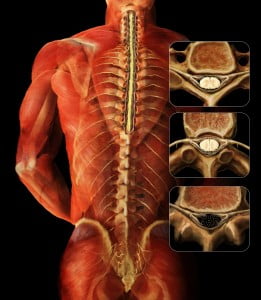
Our unique physical examination, utilizes an instrument I developed, reveals that many patients with back and leg pains have areas of muscle tenderness that are the source of their pain yet are overlooked. One study of more than 23,000 patients[2] found that 70-80% of patients with back pain were diagnosed with sprains and strains of muscle and other soft tissue. It’s hard to believe then, armed with this knowledge, that muscle examination and treatment is not part of the typical standard of care for back pain in the USA[3]. If we are to properly address the cause of most back pain, the evaluation and treatment of its muscular causes must be addressed.
[1] Friedly JL, Comstock BA, Turner JA, et al. A Randomized Trial of Epidural Glucocorticoid Injections for Spinal Stenosis. New England Journal of Medicine. 2014:374:11-21.
[2] Deyo RA, Weinstein JN. Primary care – low back pain. New England Journal of Medicine. 2001:5:363-70.
[3] Chou R, Qaseem A, Snow V, Casey D, Cross JT, Shekelle P, et al. Diagnosis and Treatment of Low Back Pain: A Joint Clinical Practice Guideline from the American College of Physicians and the American Pain Society. Ann Intern Med. 2007;147:478-491.




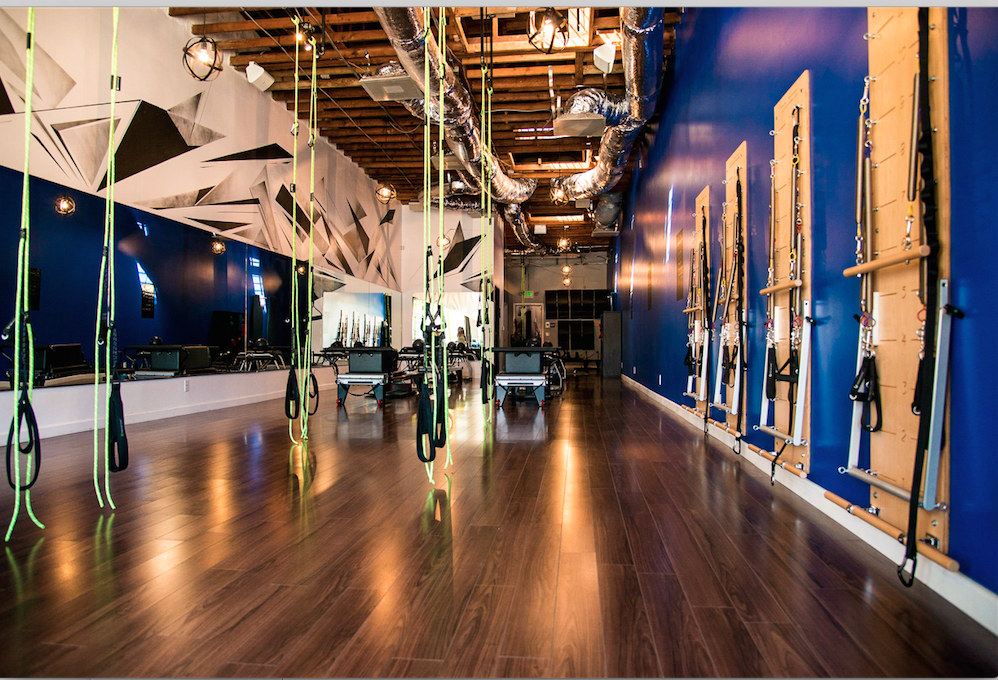



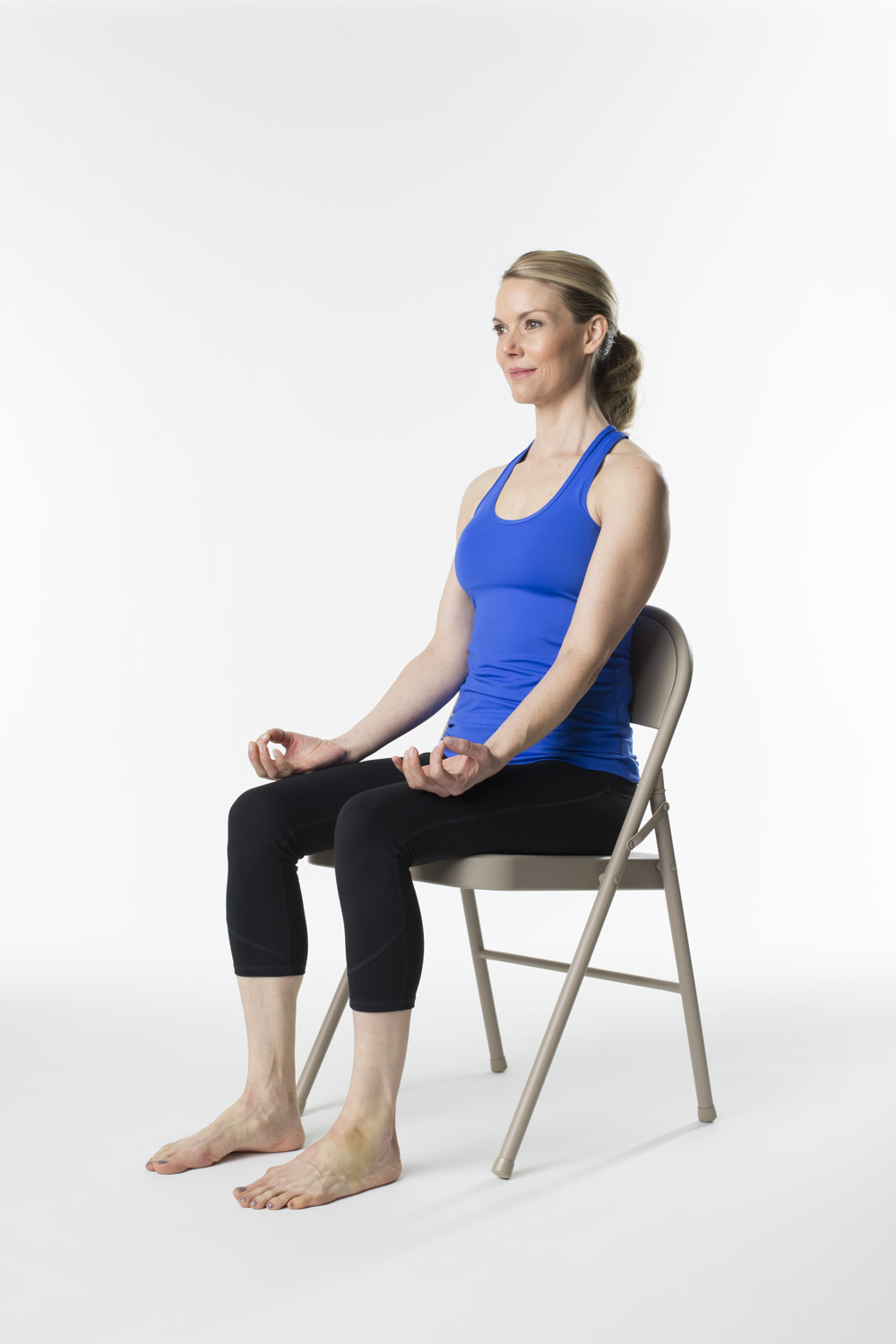
 Photo: Chris Fanning
Photo: Chris Fanning




